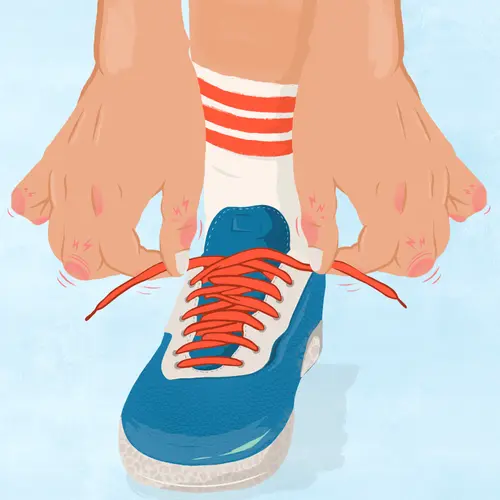Looking for new ways to soothe your stiff joints and other rheumatoid arthritis symptoms? Things like acupuncture, massage, or tai chi could help.
About 2 out of 3 people with RA try these kinds of treatments, known as complementary therapies. They may ease your pain, relax you, and improve your life.
How to Use Them
These approaches can support your regular RA treatment, but they don’t replace it.
"Some complementary treatments can really help, but only with your medication, not instead of it," says M. Elaine Husni, MD, MPH, director of the Arthritis and Musculoskeletal Center at the Cleveland Clinic.
Why? Without meds, you can get lifelong joint damage within the first few years of having RA, or even sooner. As healthy as a "natural" or drug-free treatment may sound, there just aren't any that can do what medication can do for the disease.
What Helps
Acupuncture. A few studies have found that this practice of inserting hair-thin needles into your skin to relieve pain can help with RA. But the findings are mixed. The risks of acupuncture are low, though, so it's probably fine to have it done. "I've seen acupuncture work quite well in some patients," Husni says.
Limited diet. Some people with the condition hope that diet changes -- like fasting, going gluten-free, or going vegan (no meat, dairy, or other animal products) -- will help. But there's no proof that any special way of eating helps your RA. Some diets may cut out crucial vitamins or minerals or be a problem for other reasons.
Massage. Although there’s not much research on massage for RA, it certainly can help you relax.
Meditation. Focusing your mind can help you relax and reduce stress. Studies of using meditation for rheumatoid arthritis have had mixed findings. In one, people doing “mindfulness meditation” seemed to handle pain better. This type of meditation is aimed at becoming more aware and living in the present moment.
Tai chi. This blend of gentle martial arts postures and deep breathing "can be perfect for people with RA," says Ruchi Jain, MD, assistant professor of rheumatology at Rush University Medical Center in Chicago. "It's slow and doesn't put too much stress on the joints." Studies haven’t found that it relieves pain or swelling, but it's good for your mood. It may also boost your strength and stamina to do daily tasks.
Yoga. Some studies show that yoga stretches help you move better and ease your swollen, painful joints. Just be careful with the poses you do. "If you have RA in your wrist or hands, yoga can be very hard on your joints," says Stanley Cohen, MD, co-director of the division of rheumatology at Presbyterian Hospital in Dallas. Check with a doctor first. You may want a yoga class just for people with arthritis or other conditions. Tell your instructor about your limitations, so she can give you alternatives.
Supplements
Talk with your doctor before you try a new supplement, even if it’s “natural.” She can check to see if it’s safe for you. Some people with rheumatoid arthritis take supplements such as:
Fish oil. Omega-3 fatty acids seem to lower inflammation slightly. Studies show that it may also help relieve your pain and morning stiffness. You may be able to lower your doses of painkillers if you take fish oil.
Borage seed oil. There is some evidence that taking this along with your regular medications might help your symptoms after 6 weeks of treatment. The improvement appears to last as long as 24 weeks.
Thunder god vine. Studies of animals suggest that this may help inflammation and control your immune system. But it has serious side effects, like issues with your period if you’re a woman, and fertility problems if you’re a man. So many experts say its risks are too high.
Some people with RA take other supplements too, including boswellia, ginger, glucosamine, green tea, turmeric, and valerian. But there is no clear proof that they help or are safe.
If you want to try a supplement and your doctor says it’s OK, Husni says to try it for 3 months and then decide if it has helped you. If you feel better, keep using it. If not, you can stop.

